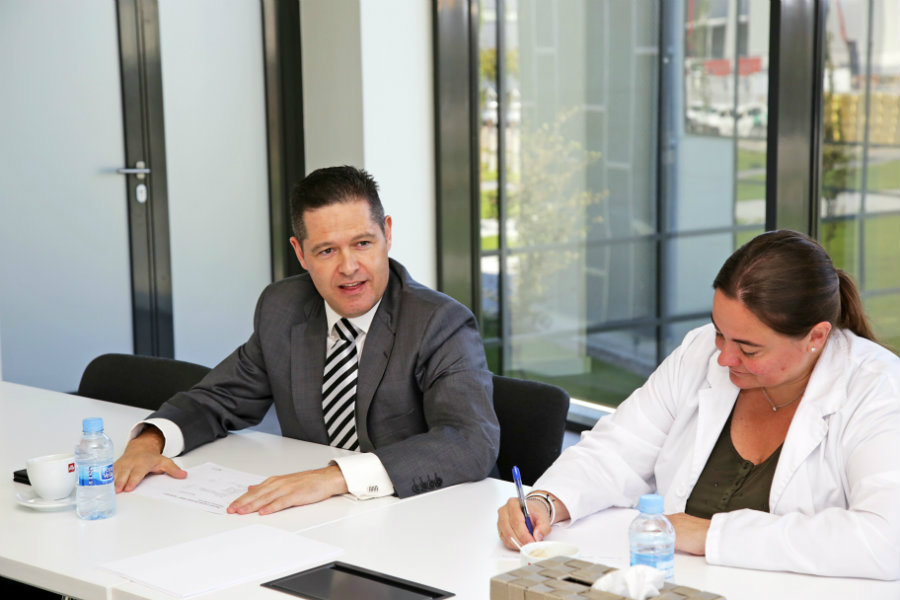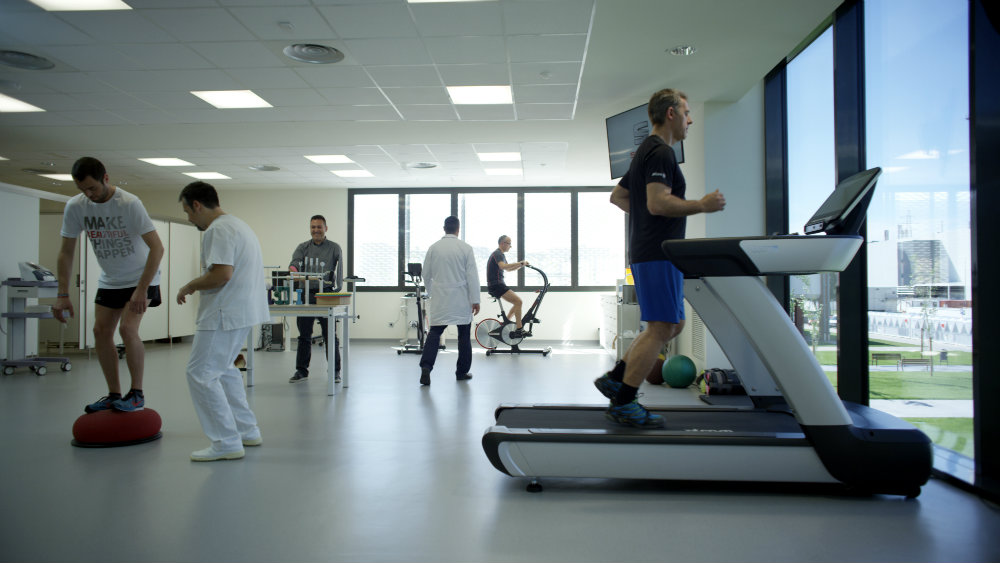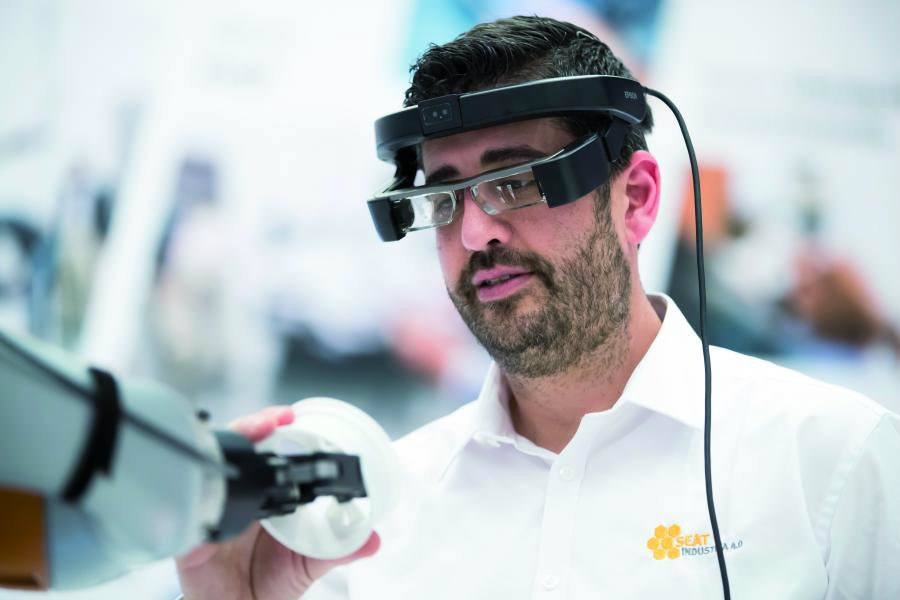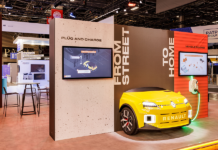
SEAT received the Top Employer certificate in February.
It is the third time in a row that we received this award. We have been investing a lot of resources in our people. We want our employees working at SEAT happy. Through investment in our people, we achieve the ‘circle of success’: If you attract good employees, they produce good results, these good results bring the company to the next level and the company becomes more attractive for new employees. Attraction and retention of good employees is key for the future.
How important is wellness to the SEAT culture?
Employees are not only interested in earning more money and working on stimulating projects, they are also interested in being healthy and the company should also care about this. We are committed to the wellness of our employees and our new building CARS (Centro de Atención y Rehabilitación Sanitaria – Health Care and Rehabilitation Center) reflects that.

Why did SEAT decide to establish CARS?
Improving the health of our workers has been a priority for many years. In the public health system in Spain, our workers would have to wait a long time for some treatments. We did not want that for them or their families. So, we established CARS which provides a more efficient service for our employees, not only in terms of physical health, but in terms of mental health.
Wellness is the excellence of health. We want not only physical wellness, but also mental wellness because we want our workers to be happy. If they are happy, productivity is higher and they do not want to change jobs.
What are the main wellness and health services provided by CARS?
The biomechanical laboratory is an important one and an example of how we are investing in the prevention of illnesses. We simulate the kind of work performed on a daily basis on the assembly line and are able to change the tasks of the employees, if necessary, to make them more ergonomically suitable.
Another service is the gynaecological tests for female employees which is pioneering in our industry. We have 3,000 female employees at SEAT, roughly 23% of our workforce which is very high for an automotive company. The main goal is to detect either breast or uterine cancer.
Rehabilitation is also provided. We have large rehabilitation premises here and it is much better to do it inhouse rather than outside of SEAT.
Fitness is another service; it is not a sports center for employees, but a transitional place between rehabilitation and the re-entry into normal work. We also offer traumatology services including image diagnostics such as radiology and echography. And we offer services related to mental health which is becoming more and more relevant.

How does SEAT preserve the mental health of its employees?
Working in an assembly line is very repetitive and can cause stress so we are rotating employees so they are not doing the same tasks again and again.
We are also looking at what will happen in the future. Today an employee works with colleagues and he can talk and banter with them. But what will happen in the future when there will be three or four robot colleagues that are very efficient, carry out the most difficult and more ergonomically challenging tasks yet do not speak?
Employees coping with this sort of social issue will be a big challenge for the automotive industry and for mental illnesses. But mental problems are not always related to the job, they tend to be related to the personal lives of the employees. We have psychologists for our workers for those matters too.
How do you think automation and AI will change the SEAT workplace in the future?
A big part of the blue-collar tasks will disappear with the introduction of AI and collaborative robots. A human employee will still make the final adjustments but there will be robots doing the difficult tasks.
For the white-collar employees, the big change is with data, with its use and its sharing in a cross-functional way. Much of this data is currently in silos and is used only in one area of the company and not shared with others. AI will allow us to share this data in a more general way breaking down the silos.
What is SEAT doing to encourage work-life balance?
We are doing many different things. One example that we are currently piloting is flexibility with regards to working hours. Until last year it was compulsory to clock in and out when you were a tariff employee. But now we have been trialling work based on trust so that some of the employees do not have to clock in and out anymore and instead agree with the boss when they will come and leave. Some good results are coming out of that. For instance, some employees like to take their kids to school in the morning and then come to work. They can do that now.
Our new CARS facilities will also allow more work-life balance because a lot of things you would normally do outside of your work time, like going to the doctor or rehabilitation, can be done here. And we are doing some pilot projects on tele-working, but of course not all workplaces or positions are suitable for this.
What can you tell about the Healthy Company Scientific Committee?
This committee was announced as we inaugurated CARS and will be formed by important doctors and scientists from different disciplines. There will be several experts including nutrition, biomechanics, sleep diseases, etc.
Helping to improve the health of the whole society is one of the main objectives of this committee. Also, within our corporate social responsibility, we want to carry out projects and initiatives that can be valuable for society.
We have a population of 14,500 employees who we know very well and to whom we will offer, on a voluntary basis, the possibility to participate in these studies. This is something scientists appreciate—to have a large amount of people who want to participate in studies.

How are you facing the challenges of digitalization of the workforce?
It will not be possible to hire digital experts for all areas of the company so we must transform from within. Our ‘Transformation Project’ aims to transform our employees to cope with new technologies in this new digitalization era.
For the blue-collar employees, there is the ‘Industry 4.0’ training which presents an overview of what is coming ahead. We show which technologies are coming to the production side such as 3D printers, augmented realities, AGVs (automated guided vehicles), etc. Our objective is to make the employee aware of the fact that they must change and be better qualified because the changes are coming sooner that we expect. If they are performing only manual tasks now, they will not survive in the future with just manual work. We are approaching them not in a scaring, but in a positive and empowering way. We survey employees asking them if they would like to continue in these tech fields. We then have a list of employees with whom we can work and transform in the future. Our objective is to transform 10% of the company in the next two years. We have 12,000 blue-collar employees and so 1,200 will be prepared to use these new technologies in all areas of the company.
What is SEAT doing to adapt its working culture for millennials?
Millennials are important in a company like ours, where we have the whole range of generations working with us. They want fast positions, information and new technologies. They want to use their smart phones and hate bureaucracy. One of the reasons why we are changing the clocking in and out process is for the millennials; it was inconceivable for them to come to a company and have to clock in to begin the work. They are not paid for the time they are at work, but for the work they do. They also do not like hierarchies so we have to flatten the organisation. We now holc meetings with top managers for all kinds of employees in the hierarchy so that they are more approachable.
Last year we held a workshop with millennials where we asked them what was important for them in the workplace. We have clustered their ideas about promotion, payment, performance measurement, motivation, etc and are now working through some of them.
What is one of the challenges you face in current role?
The automotive industry is an old one and the biggest challenge is that the kind of professionals and employees that we need for this new era of disruption are not readily available in our industry. We have to go to technology firms in order to attract these employees, but it is not easy to win these people over to our industry – they don’t find automotive attractive enough and the challenge is to seduce them![]()































